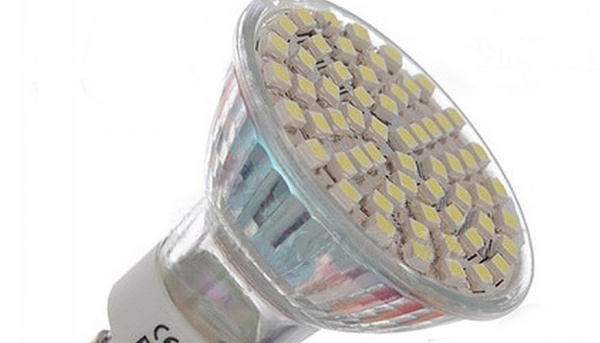|
by giles humpston, applications engineer, cambridge nanotherm
the led industry has a challenge. general lighting requires very bright leds that can replace incandescent and halogen lights. manufacturers need efficacy, cost and manufacturability to be “just right” but most leading solutions, especially in thermal management, are short of the mark. giles humpston, applications engineer, cambridge nanotherm, discusses ways to combine performance with reasonable costs and good manufacturability.
the led industry is being challenged. general lighting is where growth is, particularly in the retrofit and automotive markets, and what those markets require is very bright leds that can replace incandescent and halogen lights.

(wiikimedia commons)
there are a number of ways to achieve this, and one of the most ubiquitous is using high-brightness packaged leds (hb leds). whilst the lines are blurred, and changing as technologies develop, generally any led over 1 w can be considered high-brightness.
as leds get brighter they also get hotter, so within these packages there will be some form of thermal management designed to conduct the heat away from the die as quickly as possible. without adequate thermal management the life of the led is significantly limited - not good when longevity is a key selling point of a product.
the challenges
the major led manufacturers continue to push the boundaries by producing larger and brighter led die (>1 mm.). the question is how to package these to meet the demands of the industry. traditional leadframe packaging (albeit often with new materials) are a popular choice and essentially offer a direct copper connection to the led die, producing a very thermally effective and cheap solution.
however there are a couple of issues that rule out leadframes in many hb led packaging applications. notably there’s a significant thermo-mechanical mismatch between the leadframe and the die (cte and young’s modulus) that can have a significant impact on the reliability of the device. also, the package size is (relatively) large (>20 mm.).
as a result, the industry is increasingly looking to alternative options like ceramic substrates to package their hb leds.
the requirements
there are a number of requirements that a substrate must meet to be used for led packaging.
the precision of the circuit needs to be very high. this limits the circuitization process to thin-film direct plated copper (dpc) processes rather than conventional thick-film reductive processes. generally most hb led package substrates have the copper tracks sputtered in place as this ensures the tracks are as even as possible (the copper is built up at a 90° angle to the board). this means that the track and gap specification can be much tighter (75 μm and 50 μm respectively for 75 μm copper) - a critical factor when contacts are required for multiple die and your total circuit size is less than 10 mm.. the requirement for thin-film processing limits the range of materials that can be used - generally excluding any type of metal material that has a polymer dielectric layer.
packaging substrates require through-hole connections that connect the two sides of the circuit together. these are filled with copper during the thin-film processing, so need to be electrically isolated from the rest of the substrate, and have a very small diameter (as small as 130 μm for laser-drilled holes) to speed manufacture. this significantly limits the range of substrates that can be used (standard metal core pcbs fall down again at this point as it’s a very expensive process to create isolated through-holes). these through-holes are also used as thermal vias to help improve the thermal performance of the substrate (copper being a fantastic conductor).
the substrate itself needs to be thermally conductive enough to remove the heat from the led die to ensure it doesn’t overheat. here, there is a critical balance between cost and performance.
the substrate price correlates closely with its thermal conductivity; as thermal performance increases so does the cost. in an ideal world the material’s performance would be ‘just good enough’ and the price would reflect this, providing the most cost-effective option within the specified window of thermal performance. the material also needs to be electrically isolating, although as packaged leds are not connected directly to mains power this generally only needs to be a maximum breakdown voltage of 500 v...
conclusions
hb leds rely on ceramic substrates for their construction. the choice is limited to cheap alumina with poor thermal performance or very expensive aluminium nitride with exceptional thermal conductivity. consequently there is huge demand for a new substrate material that has good thermal properties, competitive pricing and is compatible with the existing led packaging infrastructure. nanoceramic coated aluminium admirably meets this specification with the added benefit of being exceptionally tough so there are no yield losses due to breakage. nanoceramic coated aluminium also offers the tantalising prospect of dramatically increasing the size of led substrates to exploit the consequential economies of scale.
to read the full article, click https://www.led-professional.com/resources-1/articles/cost-and-performance-optimization-of-thermal-management-solution-for-high-power-leds-by-cambridge-nanotherm.
|